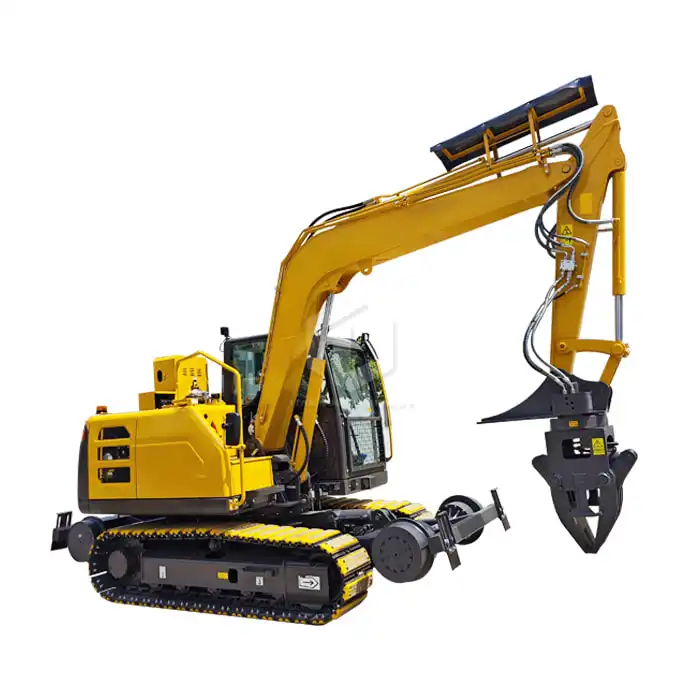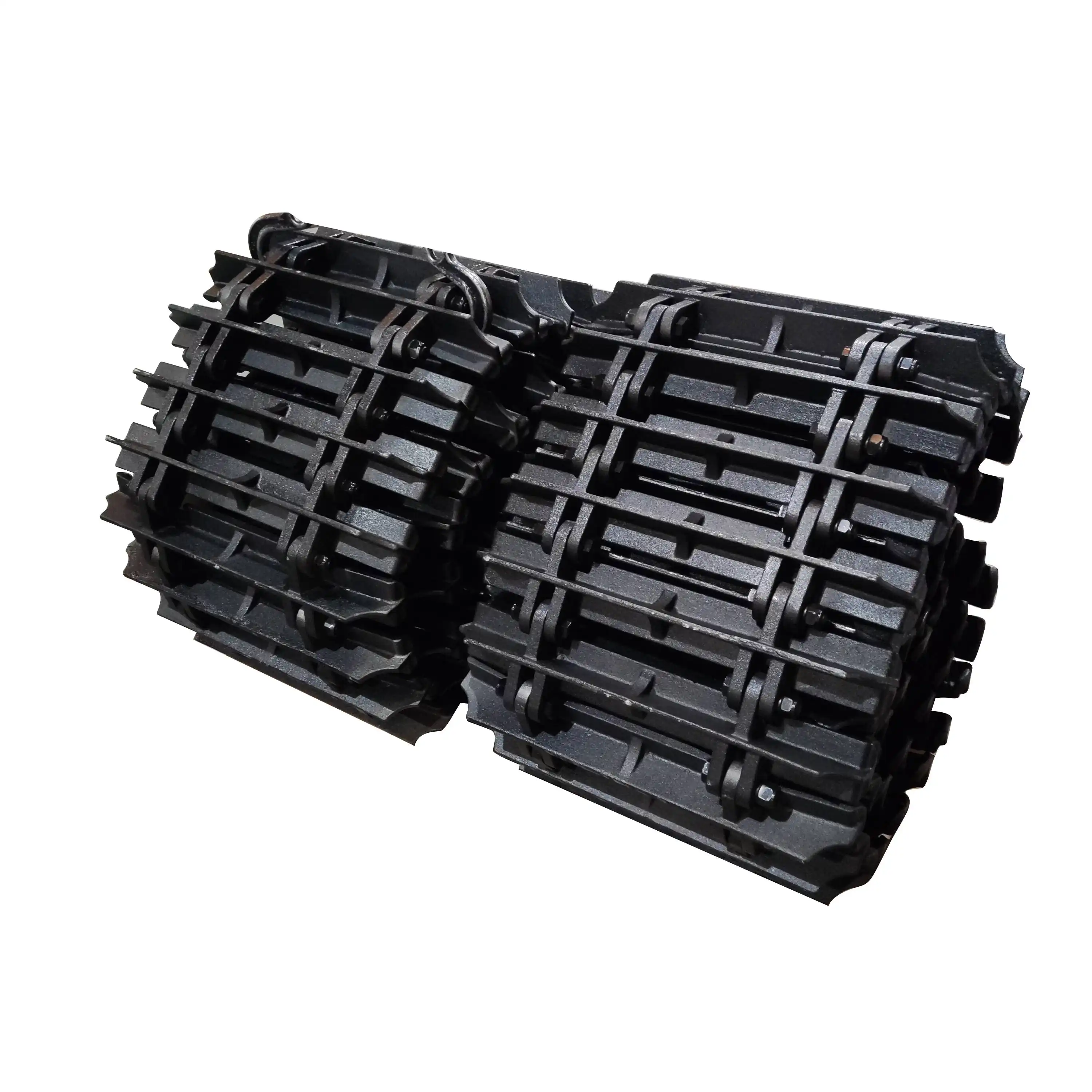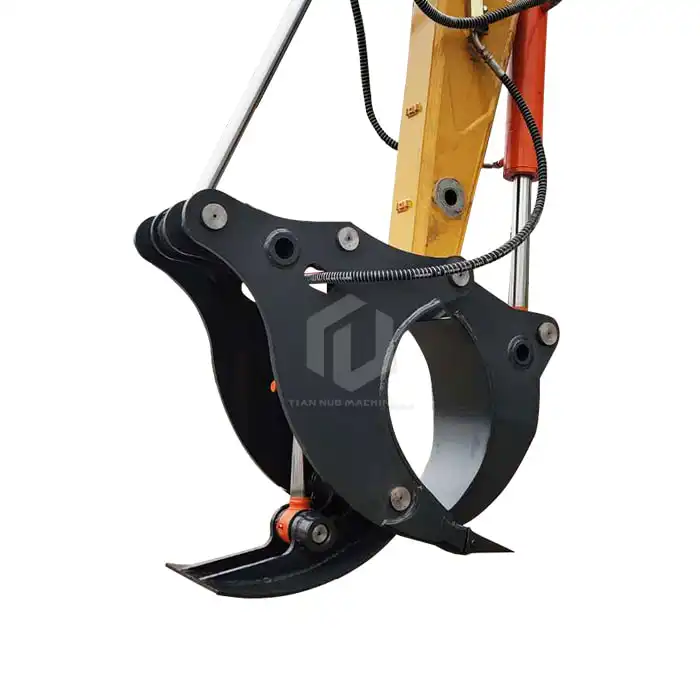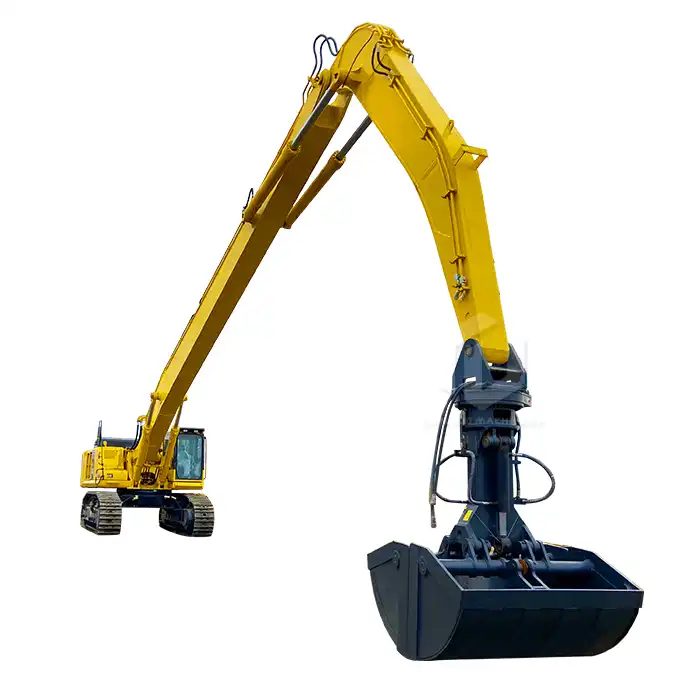How does railroad ballast tamping machine work?
Railroad ballast tamping machines are essential equipment in railway maintenance that ensure track stability and longevity. These specialized machines work by precisely positioning, vibrating, and compacting the ballast under railway tracks to create a solid foundation. The high-vibration hydraulic ballast tamping machine operates through a sophisticated process that combines mechanical precision with hydraulic power. It begins by identifying areas where ballast has settled or been displaced, then precisely inserts tamping tools into the ballast alongside the sleepers. Using high-frequency vibration technology effectively compacts the ballast particles beneath and around the sleepers, creating optimal density and support. This process restores proper track geometry, prevents premature wear on rolling stock, and ensures safe railway operations. Modern tamping machines incorporate advanced sensors and control systems that allow for consistent, measurable compaction results even across varying ballast conditions and track configurations.
Positioning And Insertion

Track Assessment and Preparation
Before the ballast tamping machine begins its work, a thorough track assessment must take place. Engineers utilize specialized equipment to measure track irregularities, identifying areas where ballast has settled or shifted. This preliminary step ensures that tamping resources are allocated efficiently across the rail network. Maintenance crews may need to supplement ballast in severely depleted sections before tamping begins. The survey data collected during the assessment helps operators program the tamping machine with precise coordinates for optimal correction. Track assessment technology has evolved significantly, with modern systems capable of detecting millimeter-level deviations in track geometry. These detailed measurements allow for targeted maintenance rather than blanket approaches, saving both time and resources while achieving superior results.
Precise Tool Positioning
The effectiveness of ballast tamping relies heavily on tool positioning accuracy. Modern tamping units utilize sophisticated hydraulic systems to position their tamping tools alongside railway sleepers with exceptional precision. These tools, resembling large metal tines, must be inserted at specific angles and depths to ensure optimal compaction. The tamping machine's positioning system uses reference points from the track itself to guide tool placement. Computerized controls adjust the insertion depth based on track conditions, sleeper type, and desired lift. Some advanced machines employ laser or GPS technology to further enhance positioning accuracy, allowing for corrections down to the millimeter. This precision extends the longevity of both the track structure and the tamping equipment itself by preventing unnecessary wear on components.
Initial Penetration Process
Once positioned correctly, the tamping tools begin their penetration into the ballast. This process requires significant force, as the ballast material—typically consisting of crushed stone—offers substantial resistance. The penetration sequence occurs in carefully timed phases to prevent disruption of the surrounding track structure. Hydraulic cylinders drive the tamping tools downward at controlled speeds, allowing them to slip between ballast particles rather than displacing them prematurely. The ballast tamping machine monitors resistance during penetration and adjusts hydraulic pressure accordingly, ensuring consistent insertion regardless of ballast conditions. This adaptive penetration capability allows the machine to work effectively even when encountering sections with varying ballast density or composition. Proper penetration creates the foundation for effective compaction in the subsequent vibration phase.
Vibration And Clamping

High-Frequency Vibration Technology
At the core of the modern ballast tamping machine's effectiveness is high-frequency vibration technology. Once inserted into the ballast, the tamping tools begin oscillating at frequencies typically ranging from 35 to 45 Hz. This high-frequency movement causes ballast particles to temporarily lose frictional contact with one another, entering a quasi-fluid state that allows for optimal rearrangement. The vibration pattern is specifically engineered to achieve maximum particle settlement without causing excessive displacement. Advanced machines utilize variable vibration frequencies that adapt to different ballast materials and moisture conditions. The hydraulic systems powering these vibrations maintain precise control over amplitude and duration, ensuring consistent results across varied track sections. This vibration technology represents a significant advancement over older mechanical systems, offering greater efficiency and reduced maintenance requirements while achieving superior compaction quality.
Squeezing and Compaction Mechanism
Simultaneously with vibration, the tamping tools execute a squeezing action that consolidates ballast under the sleepers. This squeezing motion drives ballast particles from the sides toward the center, filling voids and creating uniform support. The hydraulic cylinders controlling this movement operate with tremendous force—often exceeding several tons of pressure—to ensure thorough compaction. The timing and coordination between vibration and squeezing phases are critical for achieving optimal density. Modern ballast tamping machines utilize synchronized hydraulic circuits that maintain precise relationships between these functions. The squeezing pattern typically follows a carefully engineered sequence that prevents lateral track displacement while maximizing vertical support. This combination of vibration and squeezing creates a densely packed ballast bed that resists future settlement under the repeated dynamic loads imposed by passing trains.
Ballast Consolidation Process
The final phase of the vibration and clamping cycle involves ballast consolidation, where the particles interlock to form a cohesive structure. As vibration ceases, the ballast transitions from its fluid-like state back to a solid, with particles now arranged in positions of maximum stability. The ballast tamping machine maintains pressure during this consolidation phase to ensure optimal density is achieved. The duration of consolidation is carefully calculated based on ballast characteristics and desired compaction levels. Modern machines incorporate sensors that measure resistance changes during consolidation, providing real-time feedback on compaction progress. This feedback allows operators to adjust parameters for subsequent sections based on actual performance data. Proper consolidation results in significantly improved track stability, with research indicating up to 40% reduction in settlement rates compared to untamped sections. The consolidation process essentially resets the ballast life cycle, extending maintenance intervals and improving overall track performance.
Operation And Quality Check

Continuous Production Tamping
Railway maintenance efficiency depends heavily on the continuous operation capability of tamping equipment. Modern ballast tamping machines are designed for sustained production, with work cycles optimized to minimize downtime between tamping sequences. Continuous production tamping involves progressive movement along the track, with each section receiving precise treatment before the machine advances. Advanced machines can tamp up to 2,500 meters of track per hour under ideal conditions. The continuous operation relies on sophisticated hydraulic reservoirs and cooling systems that maintain consistent performance even during extended work periods. Machine operators monitor critical parameters through computerized interfaces that provide real-time performance data. Synchronization between tamping units, lifting mechanisms, and drive systems ensures smooth transitions between work sections. This continuous production capability allows maintenance teams to complete extensive track rehabilitation projects within limited track possession windows, minimizing disruption to rail service while maximizing maintenance effectiveness.
Measuring and Verification Systems
Quality assurance in ballast tamping operations requires comprehensive measurement and verification systems. Modern tamping machines incorporate sophisticated sensors that continuously monitor track parameters before, during, and after tamping operations. These systems measure critical values, including track alignment, cross level, and longitudinal profile to verify that tamping has achieved the desired specifications. Data collection occurs at millimeter-level precision, creating detailed documentation of track conditions. Some advanced ballast tamping machines employ computer vision systems that analyze ballast distribution and compaction quality. Post-tamping verification typically includes both machine measurements and manual spot checks by maintenance personnel. This multilayered verification approach ensures that no track section is returned to service without meeting rigorous safety and performance standards. The measurement data collected also contributes to predictive maintenance programs, helping railways identify trends and schedule interventions before critical failures occur.
FAQ
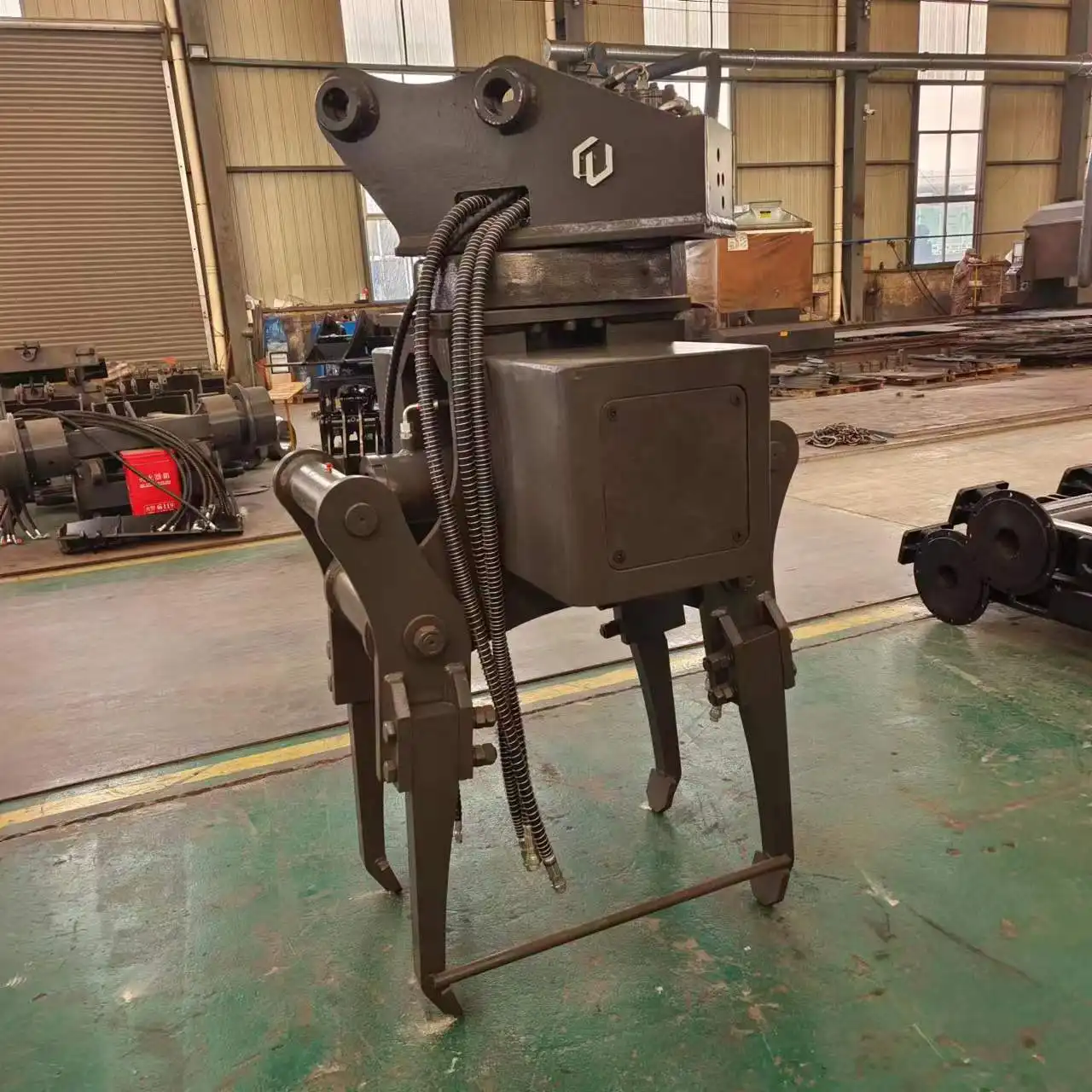
1. How often should ballast tamping maintenance be performed?
Ballast tamping frequency depends on several factors, including traffic volume, axle loads, track construction, and environmental conditions. High-traffic mainlines typically require tamping every 3-5 years, while secondary tracks may extend to 7-10 years between tamping operations. Weather extremes, particularly freeze-thaw cycles, can accelerate ballast degradation and necessitate more frequent maintenance. Track geometry measurement systems help railways identify when specific sections require tamping based on actual performance rather than fixed schedules.
2 . What is the difference between continuous and cyclic tamping machines?
Continuous action tamping machines maintain constant forward movement while tamping, allowing for higher production rates on longer track sections. Cyclic tamping machines stop at each sleeper position, perform the tamping operation, and then advance to the next position. While slower, cyclic machines often achieve more precise results for spot repairs and switches. Many modern high-vibration hydraulic ballast tamping machines can operate in either mode depending on maintenance requirements.
3 . How does the weather affect ballast tamping operations?
Extreme weather conditions can significantly impact tamping effectiveness. Frozen ballast resists proper consolidation, while excessive moisture can lead to pumping and mud formation during the tamping process. Most railways schedule major tamping operations during moderate temperature seasons. Some advanced tamping machines include ballast heating systems for winter operations, though these require additional energy and time.
Railroad ballast tamping machines represent a critical technology in modern railway maintenance, ensuring safe and efficient track operation through precise ballast consolidation. These sophisticated machines combine hydraulic power, vibration technology, and computer control to restore proper track geometry and extend infrastructure lifespan. Tiannuo Construction Machinery Co., Ltd specializes in manufacturing high-quality high-vibration hydraulic ballast tamping machines designed to meet the demanding requirements of modern railway maintenance operations. Our equipment delivers consistent performance across diverse track conditions while maintaining the precision necessary for today's high-speed rail networks. For additional information about our ballast tamping solutions or to discuss your specific railway maintenance equipment needs, please contact our technical experts at arm@stnd-machinery.com, rich@stnd-machinery.com, or tn@stnd-machinery.com.
References

Railway Track Maintenance Handbook: Principles and Practices, 7th Edition. International Railway Association, 2023.
Johnson, K. L. "Advanced Ballast Compaction Techniques for Modern Railway Systems." Journal of Railway Engineering, vol. 42, no. 3, 2022.
Smith, P. & Harkins, J. "Comparative Analysis of High-Frequency Vibration Technologies in Ballast Consolidation." Transportation Infrastructure Engineering, vol. 18, 2021.
Technical Guide to Hydraulic Systems in Railway Maintenance Equipment. Institution of Railway Engineers, 2023.
Patterson, M. "Track Geometry Management: From Measurement to Maintenance." Railway Technical Review, vol. 29, 2022.
About Author: Arm
Arm is a leading expert in the field of specialized construction and railway maintenance equipment, working at Tiannuo Company.

